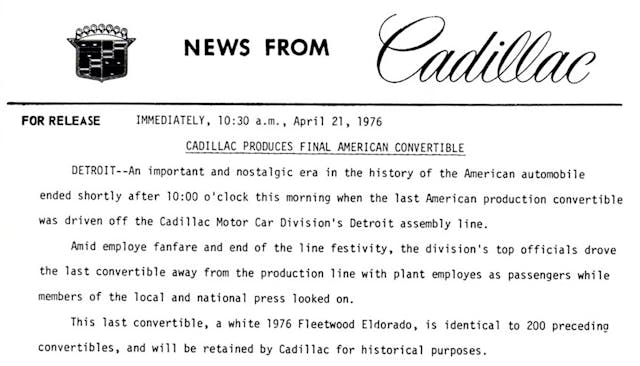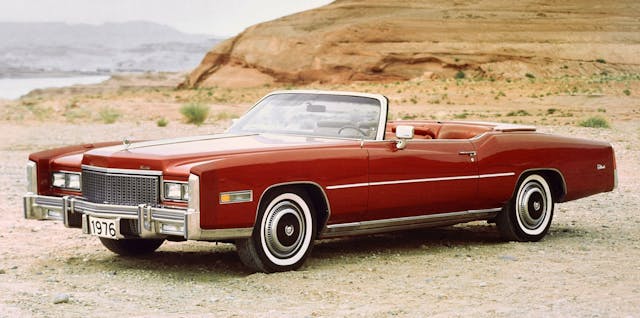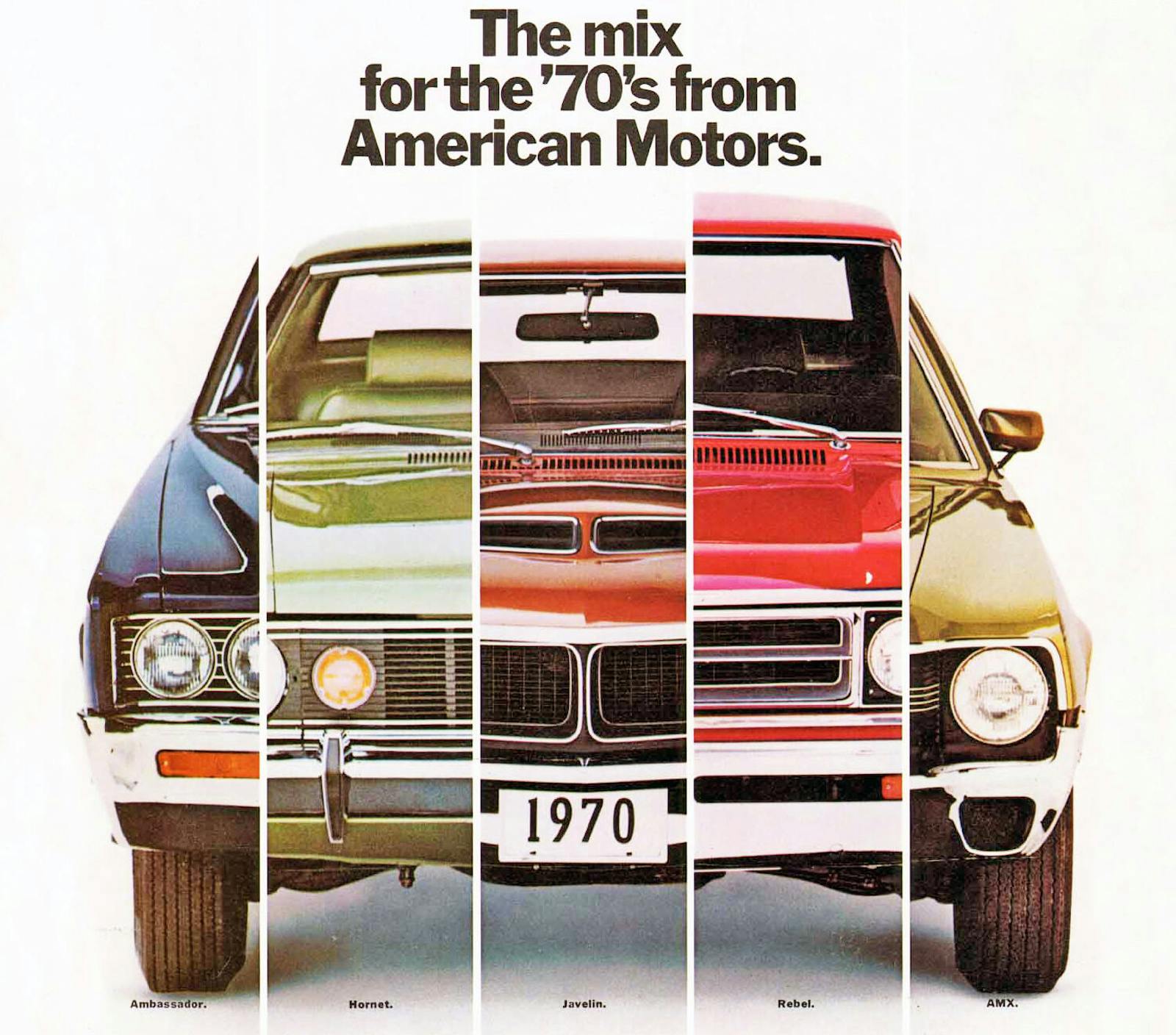Our Two Cents: The Car Industry’s Worst Predictions
My last boss in the corporate world had a great phrase he used to weasel out of potentially ridiculous plans, saving our department countless hours of pointless work and meaningless deliverables. It went something like this: “I have [insert concerns here] mostly because I lost my crystal ball years ago.”
Planning for the future is paramount in an industry with as many parts as the car business. But sometimes crystal balls should be lost, because we’ve all been affected by ridiculous predictions. So here’s the question posed to our team, in the latest episode of Our Two Cents: What are some of the worst industry predictions that influenced cars/buying habits but proved to be dead wrong? I think you’ll enjoy the answers.
The “Last” American Convertible

The debacle surrounding the 1976 Cadillac Eldorado convertible has always fascinated me. Buyers flocked to dealers for “the last of the convertibles” in a hype-fueled fervor that spun up faster than the rational mind could realize that, as easily as the company had written the decree, it could reverse that decree. Customers were buying investments based on the promise that the profit-driven company would not reverse its word, should such a reversal make financial sense.
It seems hard to believe that convertibles would actually go away, especially when the push for such a movement came from inside the house. — Kyle Smith
EVs Will Be the End of ICE

Most recently, the obvious example of wrong predictions is that everyone would rush to buy EVs. After the initial wave of early adopters, the great middle masses of car buyers are putting the brakes on that movement, and have voted with their dollars for hybrids instead.
That could easily change over time, but for now automakers like GM are having to scramble to provide the vehicle configurations that consumers actually want to buy, rather than those that regulators in Washington, D.C., want to decree that they buy. (And, for the record, I say this as an avowed liberal on most fronts.) — Joe DeMatio
Car Phones

I’ll get real niche: In-car phones. The misstep was in assuming that something that had existed on its own (the telephone) would somehow be made better when tethered to another piece of technology.
Maybe this is revisionist history with the added benefit of hindsight, but someone should have known that telephones would advance and innovate just like home computers. It feels like someone should have seen the leap from hard-wired phones to wireless phones coming far enough in advance to curtail the waste of time and money trying to stuff the phone into a car. Readers, feel free to filet me for this one in the comments. — Nathan Petroelje
That Ain’t Happening in 1976
For the given 20-year timeline of 1956–76, everything about the predictions in this video from GM are terrible. — Stefan Lombard
OPEC Will Kill The V-8

I remember reading back issues of car magazines from the 1970s and 1980s that suggested oil prices would remain high enough to lower demand for V-8 engines to the point of unprofitability, and eventual extinction. The threat was real; even the small-block Chevy and Ford engines were downsized to save the V-8. But by the late 1980s, the small-block V-8 came back just as strong as pre-OPEC times, and options like the Turbocharged Ford 2.3 died rather quickly. (Perhaps OPEC did put a nail in the big-block’s coffin?)
These days the V-8 might actually be dying, as it is gone from Chrysler Stellantis’ shelves, the Camaro is dead, and 1000+ horsepower EVs are the de facto kings of torque. The new Mustang still has a V-8 and loyalists abound (even in V-8-hungry India), so perhaps the pony car can turn into an American alternative to the likes of BMWs and Porsches. It looks like that pivot is happening, and might save the V-8 from total extinction. Fingers crossed. — Sajeev Mehta
Physical Buttons Are History
For me, it’s the assumption that everyone wants a smartphone experience in their car. Yes, it’s cheaper for automakers to install touchscreens than it is to make physical buttons, but focus groups also suggested customers wanted this type of technology. Turns out, they did not.
Physical buttons are easier to manipulate while the car is in motion, without looking, and a number of tests (including this one from Sweden) demonstrate that they’re safer. If you’ve ever tried to change the climate control in a VW ID.4 using the haptic slider while on a pockmarked Southfield Freeway in Metro Detroit, with cars 4 inches away from you in either lane, you realize how asinine this crap is.
Voice control is a neat trick, but it’s slow, annoying, and never works when a toddler is crying in the background. They want to hear Frozen‘s “Let it Go” and absolutely not “Love is an Open Door,” and that the song should be changed IMMEDIATELY. When that happens, you can’t get them to quiet down enough to say “Hey Mercedes, play _____.” — Eric Weiner
***
Check out the Hagerty Media homepage so you don’t miss a single story, or better yet, bookmark it. To get our best stories delivered right to your inbox, subscribe to our newsletters.



For the 1976 prediction: can someone explain to me where , when and what did we do wrong?
Hey Joe D, maybe this is another good example to get you to come over from the dark side??
* reply to Joe Dematio
Interesting, BUT —– The “Last Convertible” wasn’t due to regulations, it was due to the fact FEW people were buying them except in more exotic vehicles. It did not take much “prediction” to see they were a money loser. Yes they came back, but limited to sporty/higher priced vehicles.
The “Phone in a Car” actually succeed thanks to the cell/mobile phone. It was only limited initially due to cost.
“The End of the V8” I was around for BOTH OPEC fuel shortages and at the time you could buy a big block V8 car for pennies on the dollar. Don’t blame car makers for dumping big engines, it was the fickle buying public. With the up and downs of fuel costs it is no wonder the auto manufactures have a hard time predicting what the public will buy.
“Electric Cars” — Yeah no argument on the over exuberance for EV’s, BUT make no mistake they will dominated the car market in 20 years. I’d buy one, but I’m down sizing my life, selling the house – so no charger in my garage. I’m buying a hybrid for now. That said — there will be a market for new ICE powered vehicles for decades, but an every smaller one. Check China EV car sales around the world!!! Eye-opening.
What’s fundamentally changed is that none of these crystal ball market predictions were converted into an inflexible law of the land.
The YouTube located immediately below the subheading “That Ain’t Happening in 1976” isn’t in your article. The text across the black space, where the video is supposed to appear says, “Video unavailable. The uploader has not made this video available in your country.” Someone must think that we’ve moved our country to somewhere part of Siberia.
Here here! Looking forward to the end of touch screens. Gimme a set of real round gauges and controls with pull switches and knobs. And for the love of all that’s decent, no more drive by wire nonsense.
I do look forward, no pun intended, to Head Up Displays. Speed, and just a few (very few) essential readings. I think they could be easily implemented with an e-ink display on the dash.
The SAE publication Automotive Engineering had a story on the KIA EV9 back in December about how they are gearing up to sell 76% of their vehicles as EVs by 2030, and other predictions. I don’t see any of that happening. Rivian is currently losing about $40k per vehicle – yes, they retail for $75-$94k, but it costs them $137k to make. Ford is apparently struggling to sell electric vehicles too – anyone else read Aaron Robinson’s story in the latest edition of the Driver’s Club?
I cannot stand touch screens. My 2016 Jaguar F Type has the perfect (and I cannot stress this enough, it’s perfect) balance of buttons and a touch screen. This has become such a bone of contention that I find myself having to look at cars 5-10 years old if I need another as anything post 2020 have little to no buttons. I even find the GUI on my 2014 Lexus frustrating.
Ergonomically, car’s have gotten worse.
Car design reach it’s peak ~ 2010-2013.
I agree, the car phone is still alive and kicking! Lots of new cars have their own “number” because that’s the only way to have a data connection.
Unfortunately what is really going to kill the V8 is the EPA. Under Biden the EPA has been weaponized against note only ICE vehicles but also against automotive hobbyists.
The EPA via emissions regulations and noise regulations are seeking to destroy not only new ICE vehicle sales but also any performance modifications to existing vehicles no matter their age.
When a government agency like the EPA actively search the sales of collector vehicles to prosecute the owners for modifications to a vehicle government has gone too far.
Okay, I’ll bite. Can you (please) cite your source or instances of your last sentence? I agree, that is too far, but is that actually happening?
I rue the da these people learned the word ‘weaponize’….
I’ll take a small exception to the car phone gripe. It’s not that manufacturers didn’t imagine a time when a phone wouldn’t need to be tethered to a car. What they saw were executives and similar customers who wanted to be able to communicate and conduct business while in the car and portable cell phones weren’t a viable option at the time. The argument is like saying that automakers should have discontinued putting CD players in car stereos as soon as MP3s became available. Sometimes you have to provide what makes sense now even though you know it may not make sense 10 years from now.
Most of these I agree with. V-8s aren’t gone, just smaller. The car phone was more of an evolutionary step though. A friend of mine got one of the “bag phones” for his car shortly after they became somewhat affordable. That made a lot more sense than one installed in the car, except for businessmen with a driver and phone in the back seat. It was a niche item even when bag phones came out. Wireless phone technology and miniaturization just made it obsolete, the same as ICEs made the horse and buggy obsolete. EVs may eventually take over for the common commuter once they figure out an easy and fast recharge/battery swap/fuel cell scheme and that becomes a common denominator among manufacturers and wide spread across the country. Even then for heavier loads it will be tough to beat an ICE truck. But if the support system was there (when it gets there?) the common passenger car/vehicle could become EVs. So you’d have an EV parked next to your ICE pickup that you pull your camper/boat/etc. with — just like I have a Ford Escape for most commuting and an Expedition for the camper or any other reason I need the space. The Escape could easily be an EV — we rarely travel more than 200-300 miles away with it, my wife mostly uses it for back and forth to work and near home (I have a pickup I work a handyman business from, and a customized 63 Rambler for fun).
I have to disagree with the car phone being a mistake. I had a new 93 Lincoln Mark VIII with the phone-I saved so much time taking care of business while sitting in traffic for an hour each way commuting to Boston. The hands free feature often had others wondering why I was talking to myself. It was not made for future owners to use, but for the current owner. Bought another in 98 and this time the phone did not have to be tethered to the car and had a short range outside the car, another feature I enjoyed.
I love the (now non-functional) A-pillar button on my 1995 Mark. Its fun to imagine who I’d call with it.